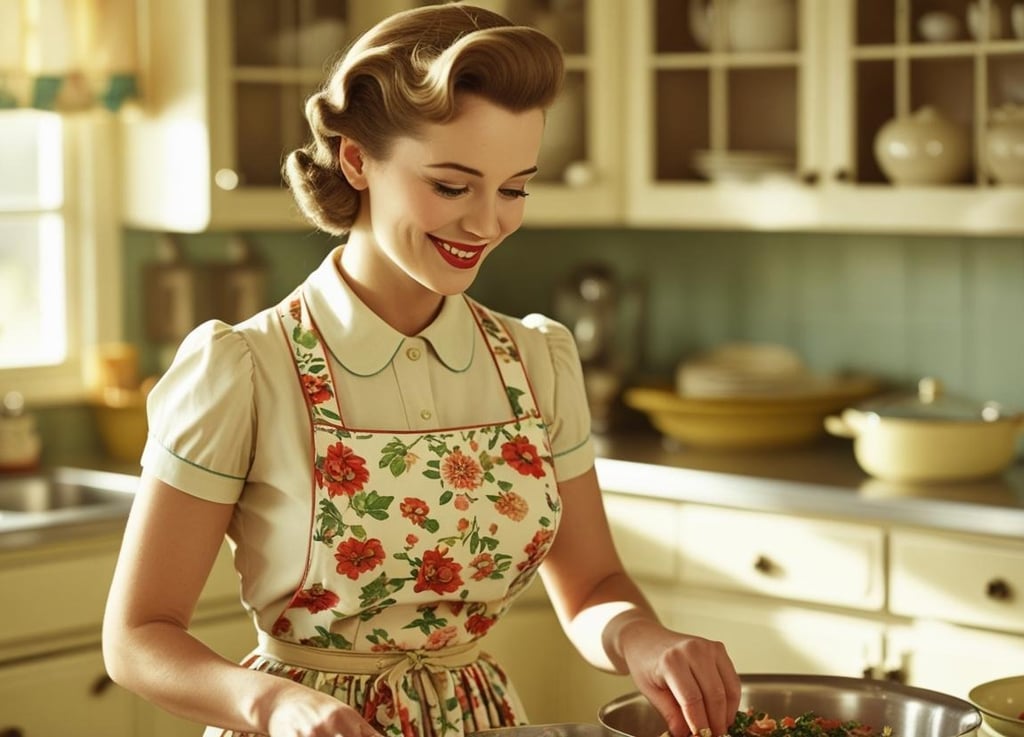“I help busy homemakers create a more organized, joyful, and manageable home life through practical routines,
creative projects, and simple systems they can stick to.”
7 Timeless Meal Prep Tips from the 1950s Every Homemaker Should Know
Discover seven practical and nostalgic meal prep tips from the 1950s that still simplify modern kitchen life—timeless wisdom for today’s homemaker.
Kim B
6/20/20252 min read


In today’s fast-paced world, the idea of preparing meals the way our grandmothers did in the 1950s might seem outdated. However, the truth is that many of their strategies were not only effective but also incredibly thoughtful and nourishing. These homemakers understood the importance of planning, frugality, and feeding their families with love and care. Here are timeless meal prep tips from the 1950s that every modern homemaker can learn from.
1. Plan the Week’s Meals. In the 1950s, homemakers relied on weekly meal planning to manage their time and budget effectively. They often used handwritten calendars or recipe cards to keep track of their meals. Try sitting down each weekend to plan your meals for the upcoming week. This not only saves time during busy days but also helps reduce grocery waste and overspending.
2. Cook Once, Serve Twice. Leftovers weren’t just an afterthought in the 1950s—they were part of the plan. Roast a chicken on Sunday, and use the leftovers for casseroles or sandwiches during the week. Homemakers maximized every ingredient, which made meals more economical and efficient.
3. Use Seasonal and Local Ingredients. Grocery stores in the 1950s didn’t have strawberries available year-round, so homemakers had to cook with what was in season. This practice is not only more sustainable but often more affordable and flavorful. Visit a farmer’s market or check what’s in season in your area and build meals around those items.
4. Batch Cook and Freeze. Freezing meals wasn’t as easy back then, but iceboxes and early freezers were used wisely. Make large batches of soups, stews, or baked goods and freeze portions for later use. This is especially helpful for busy weeknights or when unexpected guests arrive.
5. Use a Recipe Binder Instead of Bookmarking Websites. Homemakers used to have handwritten or clipped recipes organized in binders or boxes. Creating a personalized binder today can be both practical and sentimental. It’s a beautiful way to preserve family favorites and pass them down to future generations.
6. Embrace Simplicity. Many 1950s meals were nourishing yet straightforward: typically consisting of meat, a starch, and a vegetable. This balanced plate kept things manageable and healthy. You don’t need a gourmet spread to serve a good meal.
7. Get the Family Involved. Homemakers in the 1950s often included children in meal prep. This helped teach skills, responsibility, and appreciation for the work that went into feeding a family. Invite your kids to stir batter, wash vegetables, or set the table.
Incorporating these old-fashioned methods into your modern kitchen is a beautiful way to slow down and connect with your home. Try bringing a little 1950s wisdom into your weekly routine—you might find it makes life a little simpler.
